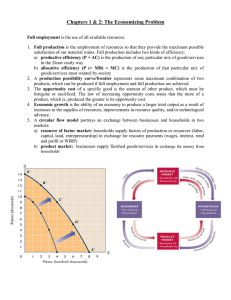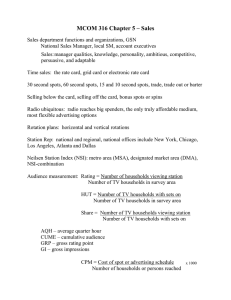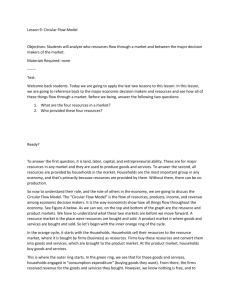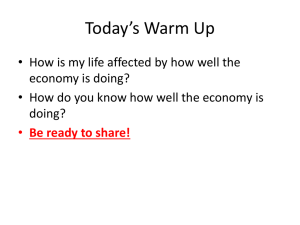Free Enterprise
advertisement
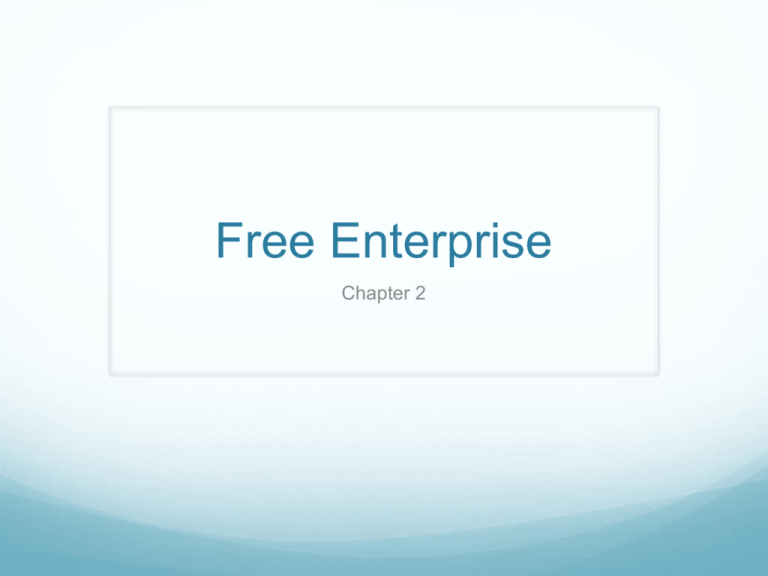
Free Enterprise Chapter 2 Definition of Free Enterprise People in their economic roles are free to make ____________ Pillars of Free Enterprise Private Property and Public Property _________________ Voluntary Exchange _________________ Market Competition __________________ Private Property The ____________ and _________ owned by individuals or businesses Public property – resources and products owned by ____________ Specialization Process by which businesses and people focus on producing one or a few parts of an entire ___________ _____________ in business also specialize (administrators, sales people, etc.) Specialization contributes to higher ________ and __________ Voluntary Exchange Specialization leads to voluntary exchange Everyone is ____________ on many other people to voluntarily produce and exchange products The Price System Uses monetary prices as a __________ system to facilitate exchanges between buyers and sellers Prices act as messengers Prices provide strong ____________ to businesses and consumers Market Competition Competition among businesses Competition in ____________ markets (land, labor, and capital) Competition in Markets for products (all goods and services consumers buy) Entrepreneurship The _____________ that drives business leaders to compete and react to changing conditions in the market Other Economic Systems ______________ System – Government holds most property rights and government issues commands to make the what, how, and for whom choices. _______________ System – people rely on tradition and customs to make the what, how, and for whom choices. ______________ Systems – Blend of voluntary exchange, government command, and even traditional elements. Three kinds of models common in economics Descriptive Predictive Ideal Circular Flow of Money, Resources, and Products Outside part, arrows pointing counterclockwise = flow of ___________ and goods and services Inside part, arrows pointing clockwise = flow of __________ in the economy Households People living in the U.S. Members of households are consumers because they buy and use the goods and services that businesses produce. Households are also resources owners. They own the resource of their own labor and land and capital. Households provide labor to businesses and buy goods and services businesses produce. Businesses produce goods and services for households and pay the wages and salaries households use to buy goods and services. Production and exchange are tightly linked in a free enterprise economy The Circular Flow Model is an illustration of how people in the economy depend on one another Money Anything accepted as __________ for goods and services __________ – exchange of goods and services without using money Money is _________________________ _________________________ _________________________ Goals of US Economic System Full employment – almost all people in labor force are able to find work __________________ – increase in output of goods and services Price stability – prices of goods and services and resources do not fluctuate __________________ – freedom to choose how to earn and living and spend their income Economic security – basic needs of every person should be met _________________ – fairness and impartiality, economic opportunities Efficiency – getting maximum output from the resources used to produce goods and services
